I spent a month backpacking through South America and it was one of the highlights of my round-the-world journey. From the stunning landscapes of Chile to the lively energy of Brazil and the colourful charm of Argentina, it’s no wonder its popularity is on the rise. My 30 days in South America took in the sights of Chile, Brazil and Argentina and the incredible Iguazu Falls at a relaxed pace. This meant I could get to know the vibe of each place, rather than rushing to tick off many countries. Read on to discover the ultimate 1-month South America itinerary.
This post may contain affiliate links. That means, if you make a purchase, I may receive a small commission. As an Amazon Associate I earn from qualifying purchases. For more information, read my disclaimer.
Quick overview of the best 1 month South America itinerary
- Duration: 30 days covering Chile, Brazil and Argentina
- Best for: Solo travellers, couples and backpackers
- Budget range: From low-cost to mid-range with optional luxury upgrades
- Key highlights: Atacama Desert stargazing, Christ the Redeemer statue, Iguazu Falls, Buenos Aires tango
- Transportation: Mix of flights and buses
- Accommodation: Hotels, guesthouses or hostels, one overnight bus (flight alternative available)
- Best time to visit: March-May or September-November for optimal weather
How to plan your South America itinerary for 1 month
Planning a one-month trip through South America can feel overwhelming, given the continent’s vast landscapes, diverse cultures and countless attractions.
In this article, I recommend a 30-day itinerary that covers highlights of Chile, Brazil and Argentina for an unforgettable journey across this incredible region. It includes what to do, where to stay and how to travel around on your 1 month South America itinerary.
Weeks 1-2: Chile
Chile is a great place to start your one month South America backpacking itinerary. Its natural scenery ranges from the world’s driest desert to vast icefields and glaciers, the highest mountain range outside Asia and even rainforests. Meanwhile, its cities are colourful and relaxed, the people are friendly and the food and wine is magnificent.
If you only have two weeks in Chile you can still experience plenty of what this country has to offer. I recommend spending time in the capital Santiago, then heading north via Valparaiso to the Atacama Desert. Not a bad set of sights for just a few days.
Buy the latest Lonely Planet Chile & Easter Island guide book to help you plan your trip.
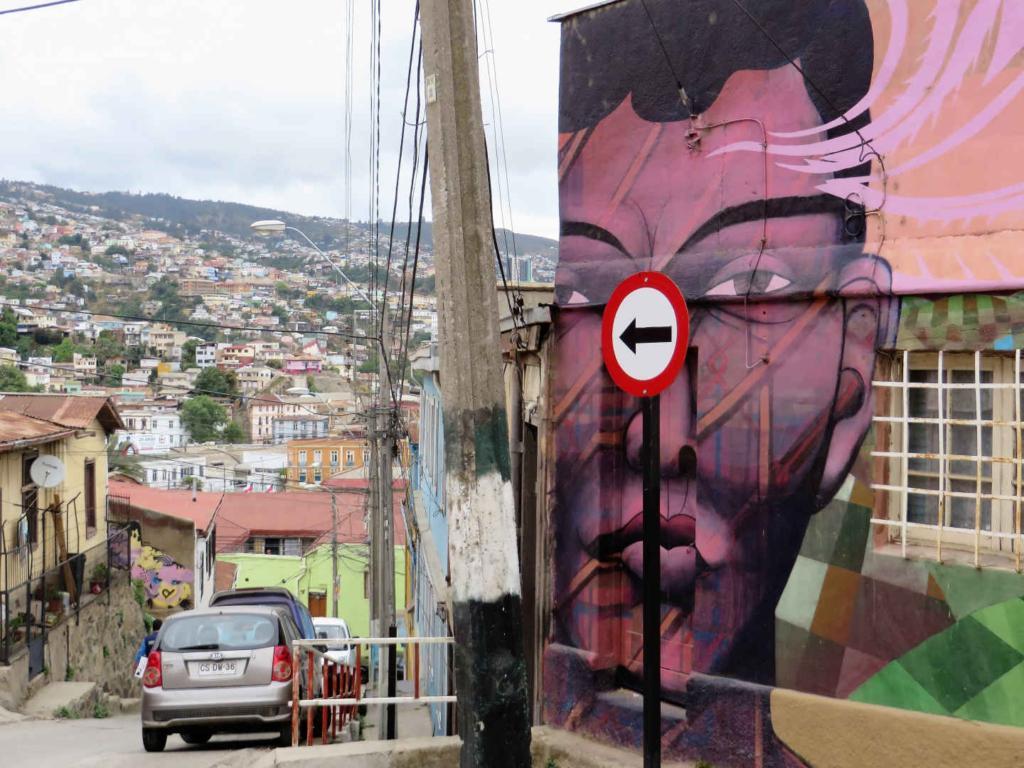
Day 1 – Check into your accommodation in Santiago
After your flight to Santiago, Chile, take time to settle in and appreciate the surroundings. Here, ancient snow-capped Andes mountains calmly cast their gaze over Santiago’s skyscrapers and historic cathedrals.
In Santiago de Chile, there are plenty of accommodation options. I stayed at the Guanako Hostel near the bars and restaurants of the bohemian Barrio Bellavista district. This cool, contemporary hostel also has a fantastic roof terrace.
If you prefer a hotel, check out the gorgeous Hotel Boutique Castillo Rojo or the fabulous Casa Bellavista Hotel.
Check the prices for your dates and book one of the best hotels in Santiago using the map below:
Day 2 – Take a walking tour of Santiago
I recommend taking a walking tour of Santiago on your first day, to see the city highlights and to get your bearings.
On my tour, a local guide, Franco, showed us sights including beautiful cathedrals, statues and La Moneda Palace. You can still see bullet holes in the palace, from when it was attacked during the military coup d’état in 1971 and where President Allende made his last speech before he died inside.
Reserve your spot on a walking tour of Santiago, with a local guide who can show you the city’s highlights.
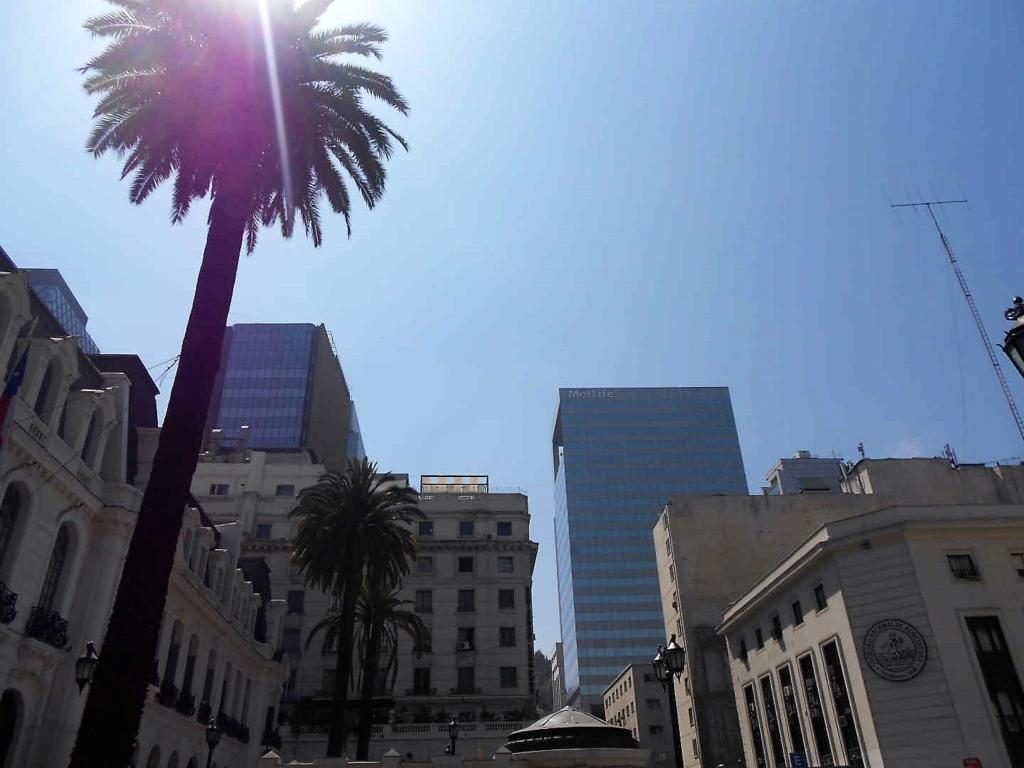
Day 3 – Climb up to Cerro San Cristobal
A ride up the city’s funicular cable car (around $4 for a return trip) leads to Cerro San Cristóbal, a mount with a small chapel and shops serving refreshments.
High up at the top stands the statue of the Blessed Virgin Mary, gazing humbly over the bustling metropolis. She is reminiscent of Rio de Janeiro‘s Christ the Redeemer but without his giant-sized glamour.
Reserve your spot on a guided tour of Cerro San Cristobal, including the cable car.
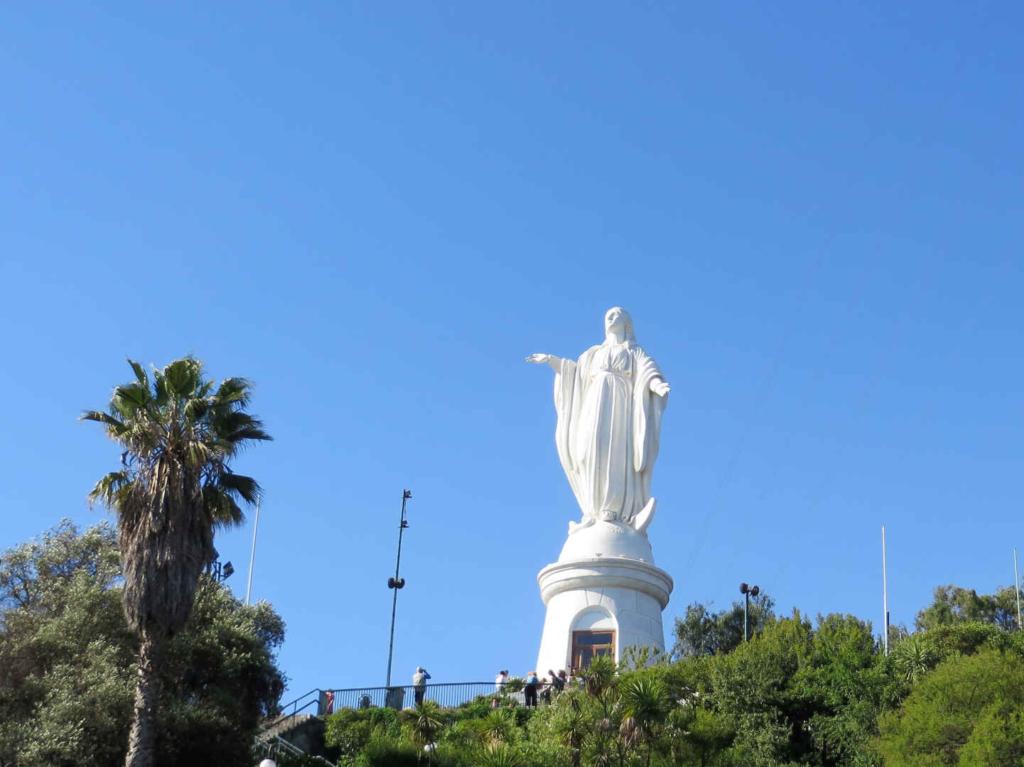
Day 4 – Day trip to the famous Concha y Toro winery
Chilean wine is loved around the world, so it’s definitely include a vineyard visit on your Chile itinerary.
We visited the Concha y Toro winery to have a taste of some of the best. It’s just under two hours south of Santiago by public transport, which costs around $5 for the return journey.
The Concha y Toro tours are priced from $25 so not cheap, but it’s a great day out if you are a wine lover. As the region’s largest producer of wines, Concha y Toro is one of the global leaders in its field.
Book a guided tour of the Concha y Toro winery including transfers from Santiago.
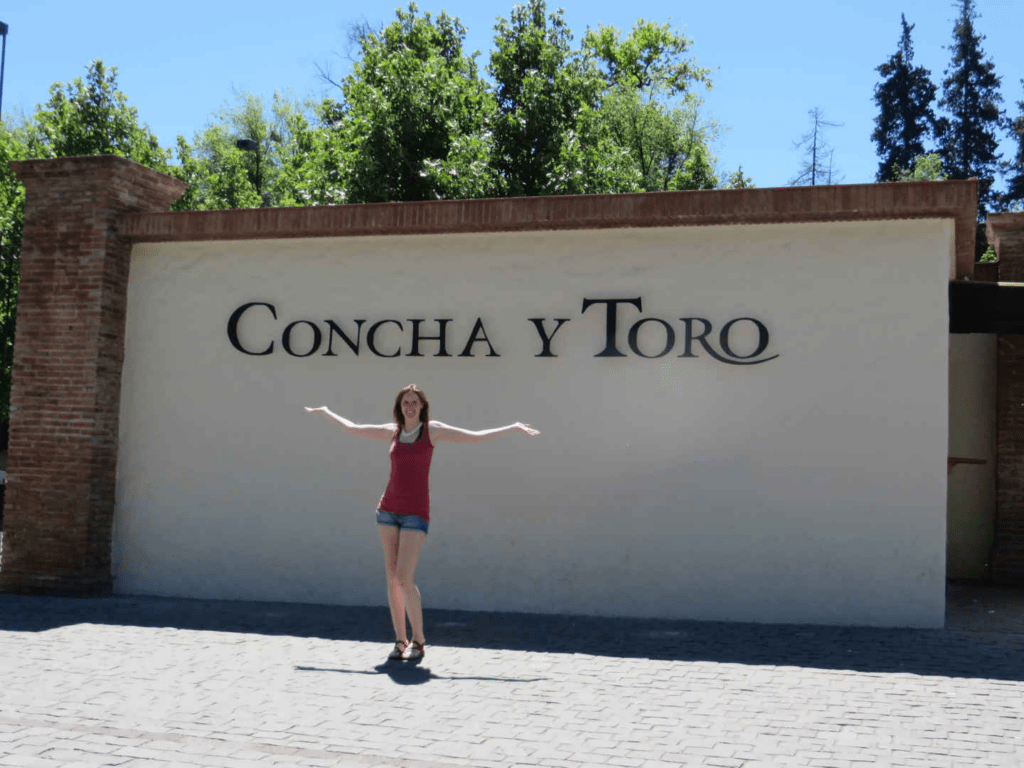
Day 5 – Travel to Valparaíso
Santiago to Valparaíso is two hours by train or about an hour and a half by bus (around $15 for a return ticket), so it’s an ideal next stop on your Chile itinerary. I recommend allowing a day for the journey, then you can take your time to find your accommodation and settle into this pretty port city.
If you are looking for hostels in Valparaíso, one of the best is the wonderful La Casa Piola, which has comfy beds, clean bathrooms and cool staff. For an affordable hotel in Valparaíso, try the lovely Casa California Guesthouse. Close to the city centre, you can enjoy its bar, terrace and garden.
Check out the map below for the latest accommodation deals for your dates in Valparaiso:
Day 6 – Street art tour of Valparaíso
This city’s historical quarter is a UNESCO World Heritage site, thanks to its large colourful murals on the walls of its residents’ homes. To get to know Valparaíso, I recommend doing a walking tour to explore the renowned street art.
Book your Valparaiso walking tour in advance for instant confirmation.
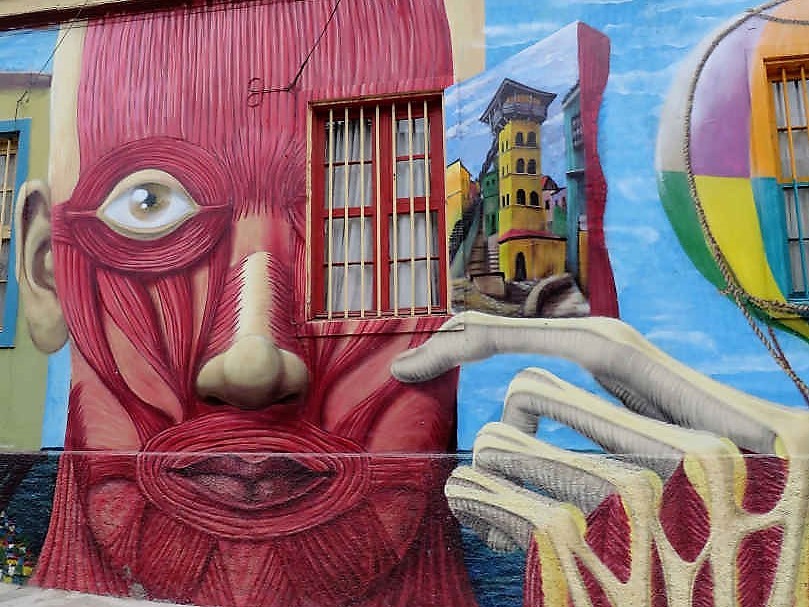
Day 7 – Day trip to the beach at Viña del Mar
If you find yourself with spare time, why not take the 20-minute bus ride to the neighbouring city of Viña del Mar for a meal in a beachfront restaurant overlooking the Pacific Ocean.
If you decide to stay overnight in Viña del Mar to enjoy the beach, check out the excellent Hostal Casamar-Viña. It’s well-liked by guests for its friendly staff and convenient location.
Otherwise, it’s time to return to Santiago for your journey into the Atacama Desert.
Day 8 – Travel to San Pedro de Atacama
It’s a 24-hour bus ride to San Pedro from Santiago, which costs around $100 for a return ticket. Alternatively, there are cheap flights from Santiago to Calama, which only takes two hours, followed by a bus journey of just over an hour to San Pedro.
Book your flights from Santiago to nearby Calama here.
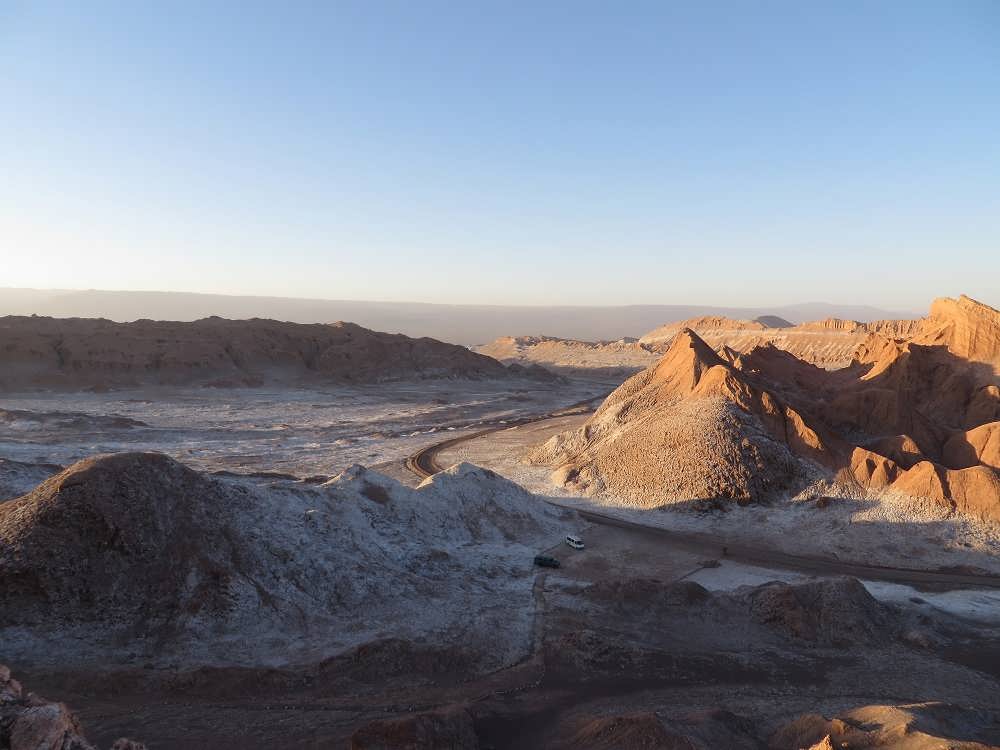
Day 9 – Check into your accommodation in San Pedro
There are some cool places to stay in San Pedro. At the Anka Hostel, you will receive a warm welcome from the hosts. It’s a little oasis in the heart of San Pedro, where you can relax in one of their awesome hammocks. The wonderful Hostal Campo Base is in a great area a 10-minute walk from the centre and guests love its delicious breakfast.
If you’d prefer a private room, head to the beautiful boutique-style Terrantai Lodge, which offers free wine and cheese tasting sessions where you can meet other guests. Alternatively, the tranquil Hotel Desertica has a divine pool area.
Explore the map below and find the availability and best prices for your dates in San Pedro:
Day 10 – Go star-gazing in the Atacama desert
One of the best things to do in San Pedro de Atacama is to go star-gazing to take advantage of the desert’s legendarily clear skies.
Our star-gazing host was knowledgeable and a great storyteller, clearly passionate about astronomy from a social and cultural perspective, as well as scientific.
Reserve your spot on an incredible astronomical tour to discover the secrets of the night sky over Atacama.
Day 11 – Go sandboarding on the desert dunes
One of the coolest experiences in the Atacama desert is to sandboard its soft sand dunes. There are many tour agencies in San Pedro where you can book a sandboarding trip.
Whether it’s your first time or you’re an expert rider, book your sandboarding trip online in advance here.
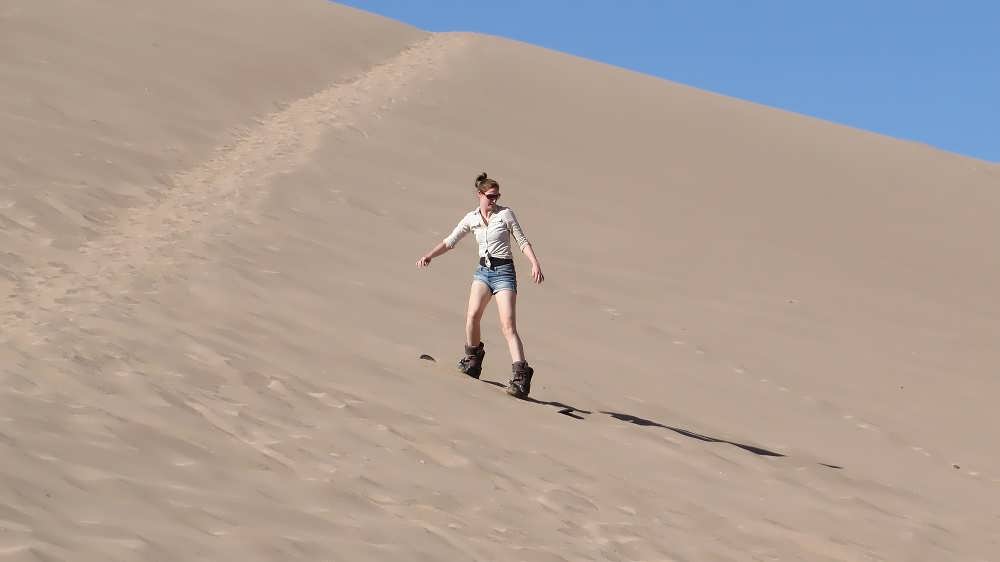
Day 12 – Explore the Valle de la Luna
When you’re in San Pedro, you simply must do a tour of the Valle de la Luna.
Valle de la Luna means Moon Valley and it’s named because of the landscape’s resemblance of the moon’s surface. It is beautifully desolate, with mile-wide craters and an amphitheatre naturally created from the rock worn by the elements over thousands of years. This trip is excellent if you’re keen on hiking in Chile, as the scenery is so unique.
Book your Valle de la Lune guided tour, which includes transfers from San Pedro.
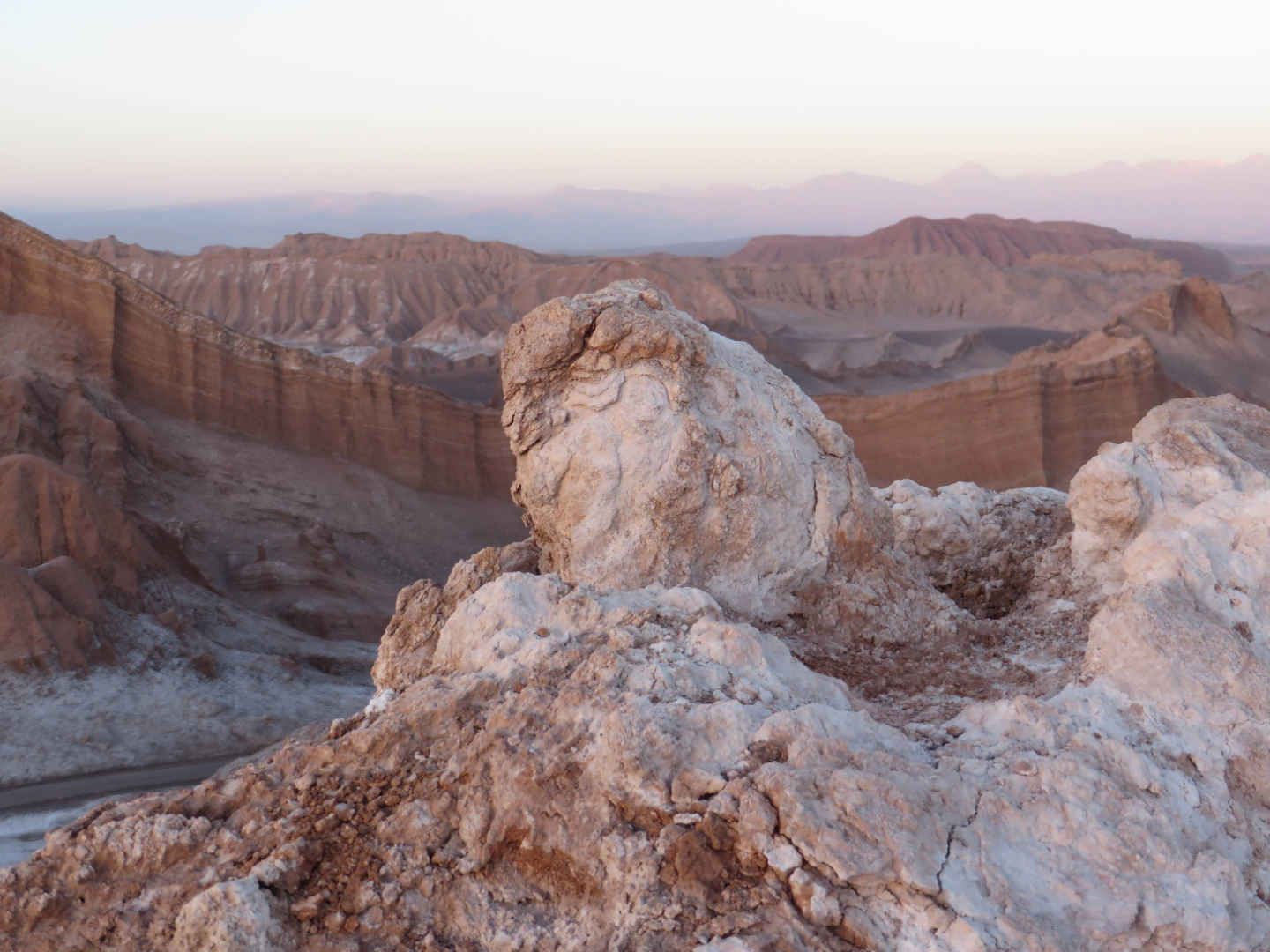
Day 13 – Return to Santiago and head to Rio de Janeiro
Take the time to catch your flight or bus back to Santiago and prepare for your flight to Rio de Janeiro, the next stop on our one month South America itinerary.
Read my full blog post about the best two week itinerary in Chile here.
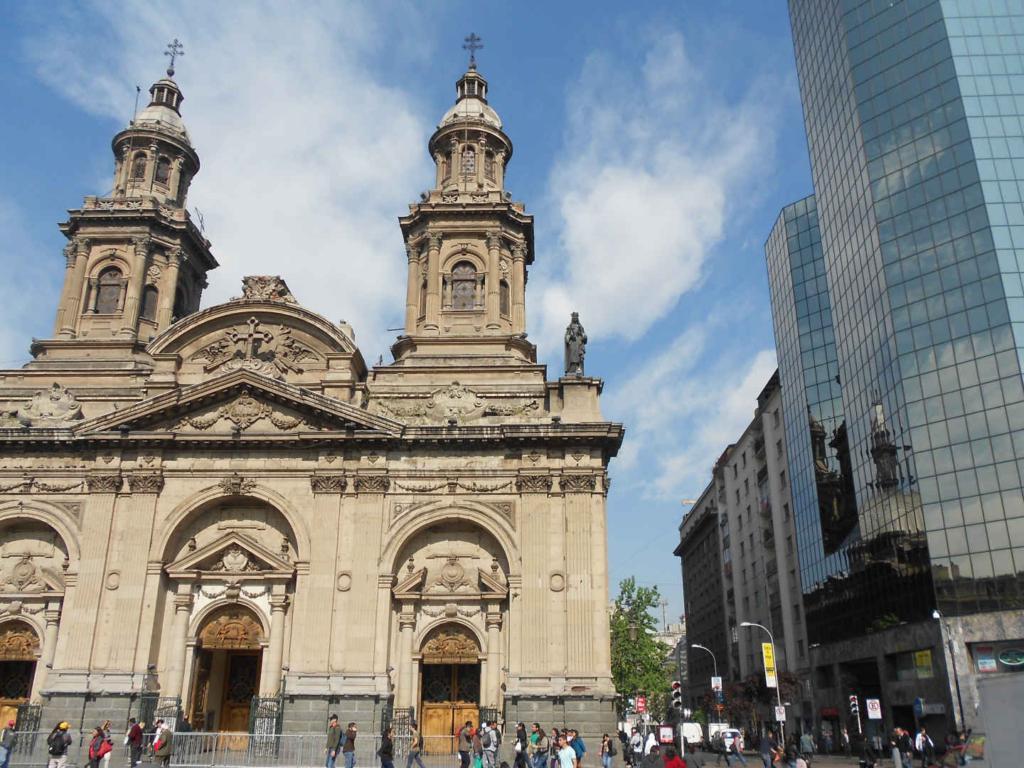
Week 3: Rio de Janeiro, Brazil
Rio de Janeiro is a city full of passion, drama and excitement. Couples kiss in the street and the street samba parties entice you to join in. It’s a short flight from Santiago de Chile to Rio de Janeiro. I spent a week here while travelling in Brazil, as part of my South America 1 month itinerary. Highlights include its famous beaches, imposing Sugarloaf Mountain, the colourful Selaron Steps and the iconic Christ the Redeemer statue. Discover the best places to stay and all the top things to do in Rio during your stay here.
Day 14: Check into your accommodation in Rio de Janeiro
When I first arrived in Rio de Janeiro, I stayed in Ipanema, a couple of blocks from the beach, and I loved this area. A fabulous hotel in Ipanema is the beachfront Hotel Arpoador which has comfy beds, stunning sea views and an on-site restaurant and cocktail bar.
Beach-lovers will also love the popular Copacabana neighbourhood. The beachfront Arena Copacabana Hotel is a modern hotel with a rooftop pool, gym, sauna and a fine-dining restaurant.
Check out all the best accommodation in Rio de Janeiro for your dates by exploring the map below.
Day 15: Go on a guided tour of Rio de Janeiro
One of the best things to do in Rio de Janeiro on your first day is take a tour of the city. This will help you get your bearings. A local tour guide will show you what to see in Rio and share tales of the city’s fascinating history.
Try this half day guided tour, which picks you up in a comfortable air-conditioned bus. It takes you directly to several of Rio de Janeiro’s top highlights over the course of a morning. By lunchtime, you will be able to cross off your list many of the coolest things to see in Rio.
Day 16: Climb the mountain to visit the Christ the Redeemer statue
If you’re in Rio de Janeiro, you will no doubt want to visit its iconic Christ the Redeemer statue. This captivating statue is the world’s largest Art Deco sculpture and one of the New Seven Wonders of the World.
To truly appreciate the scale of this monument, you need to climb the mountain and stand at his feet. Luckily, there is transport available to take you up to the peak.
Book your train ticket to see the Christ the Redeemer statue at the peak of the Corcovado mountain.
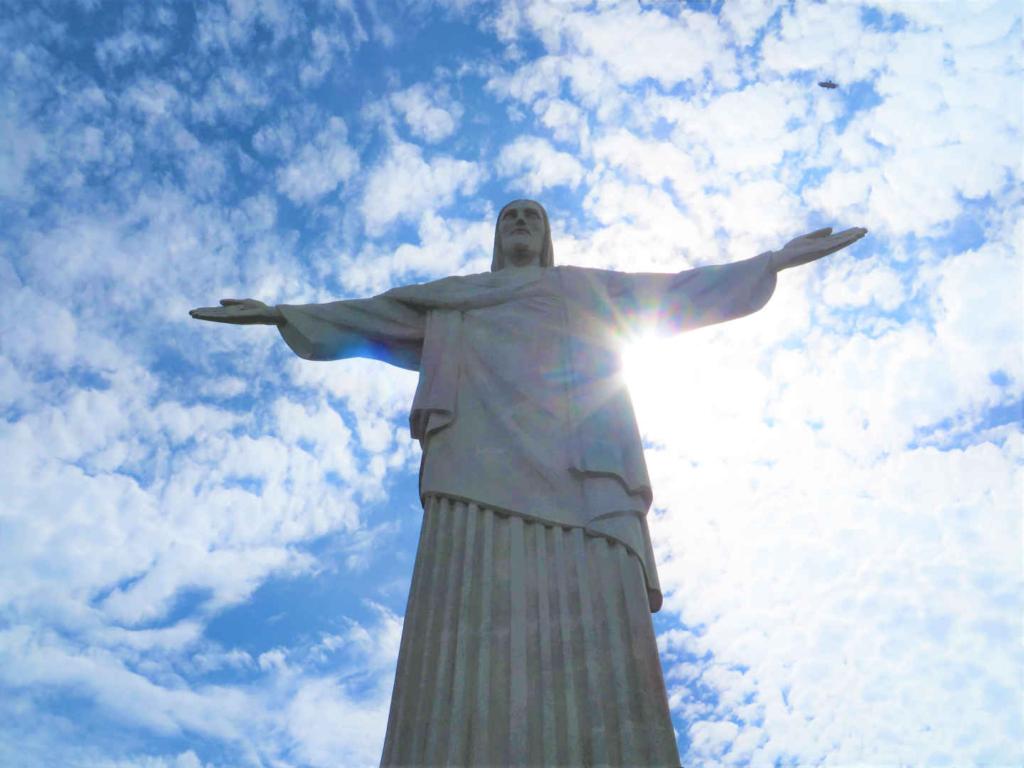
Day 17: Sunbathe and people-watch on the beach
Top of the list of cheap things to do in Rio de Janeiro is visiting one of its famous beaches.
Ipanema is one of the prettier and quieter beaches. Here, you can people-watch to your heart’s content. Lay back and take in the view of the sea, the mountains and the sky. In the sky, buzzing helicopters and birds of prey circle overhead. Copacabana is another of Rio’s famous beaches.
Book your spot on this sunset bike tour with a local to discover Ipanema and more beautiful beaches in Rio.
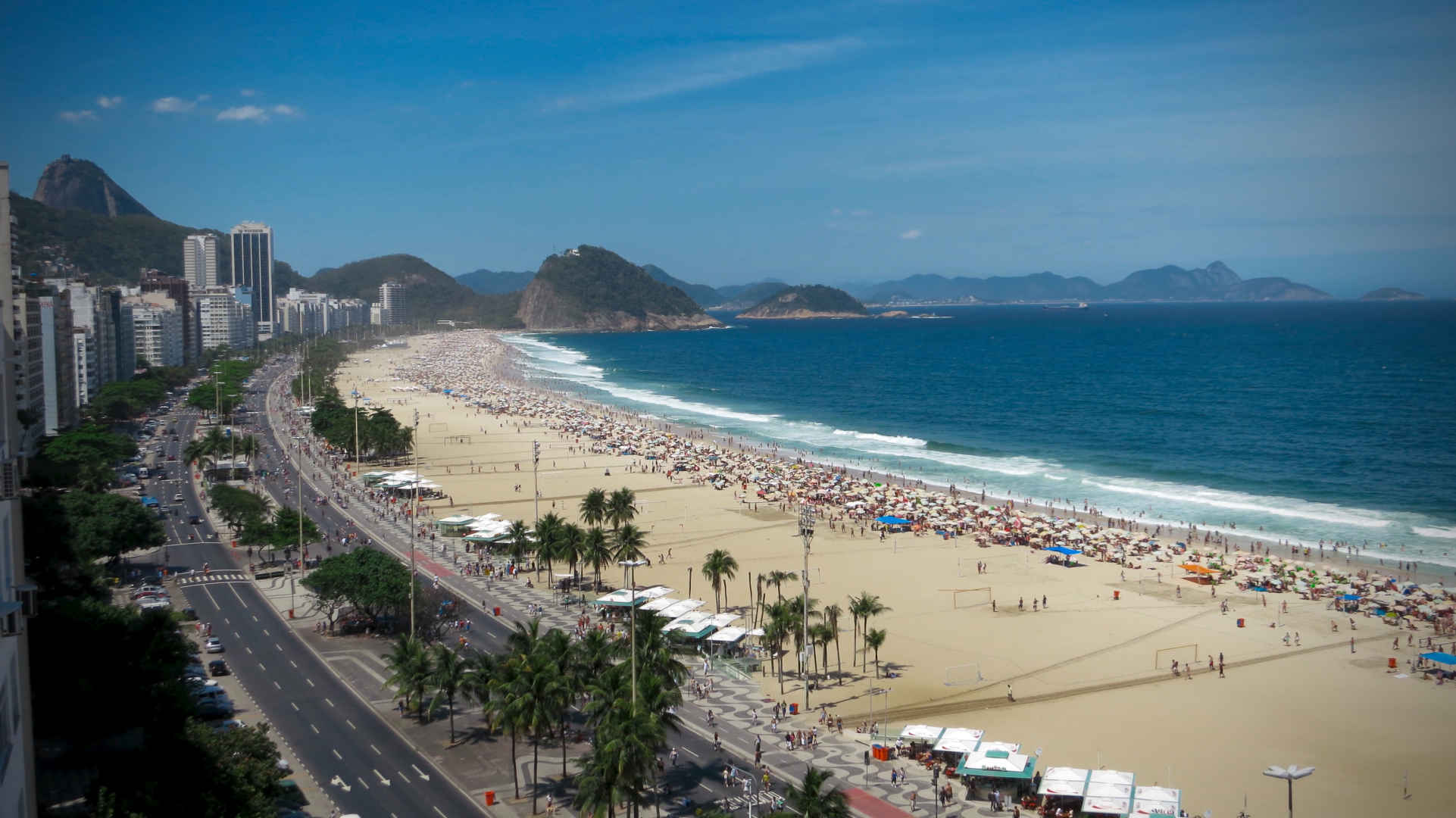
Day 18: Ride the cable car up to Sugarloaf Mountain
Riding the cable car up Sugarloaf Mountain is also one of the top things to do in Rio de Janeiro. This is an excellent way to enjoy panoramic views over the city and beyond.
Enjoy the sights from the cable car, then take your time with a cocktail at a bar on the summit. Here, you can appreciate the incredible 360-degree views.
Reserve your cable car ticket online in advance with this popular guided tour.
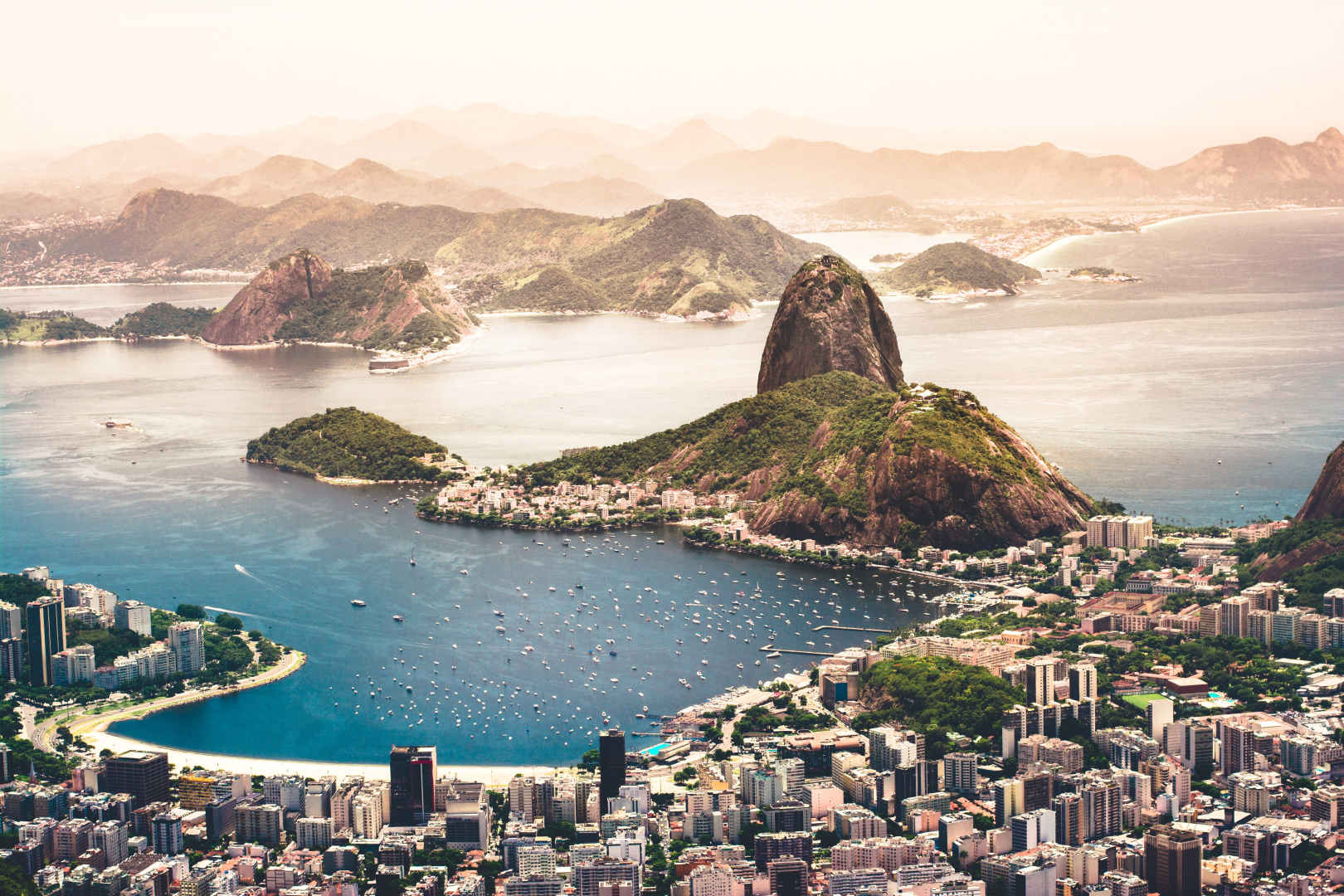
Day 19: Walk up the colourful Selaron Steps
Anyone wondering what to see in Rio de Janeiro would be mad to miss the colourful Escadaria Selarón. Also known as the Selaron Steps, they sit between the neighbourhoods of Lapa and Santa Teresa.
It’s the work of Chilean-born artist Jorge Selarón. He decorated the 125-metre staircase with tiles in the colours of the Brazilian flag, as a tribute to Brazil’s people.
Read my full guide to Rio de Janeiro, including more accommodation and activity recommendations, here.
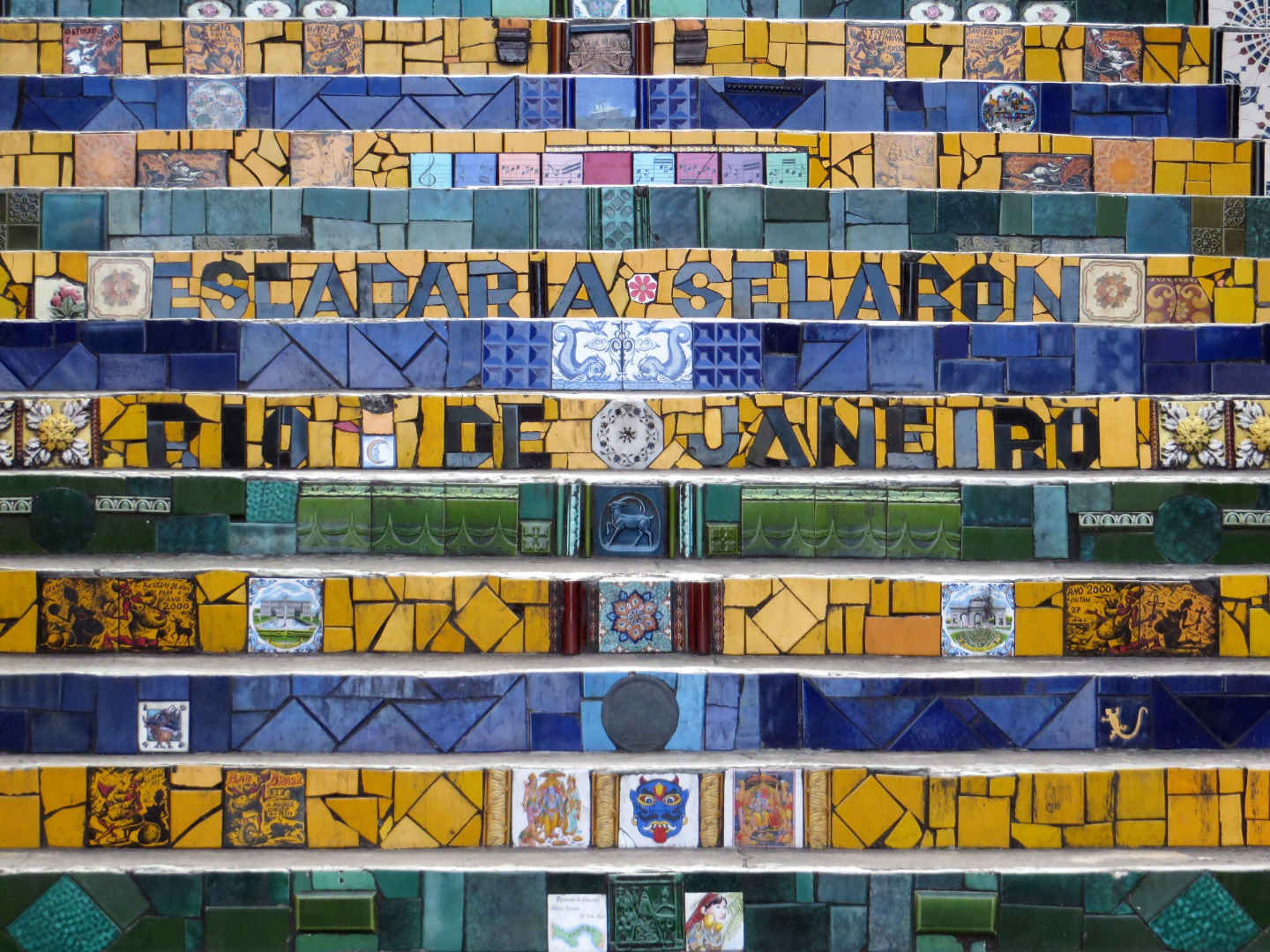
Week 3 (continued): Iguazu Falls
Straddling the borders of Brazil and Argentina is one of the world’s most spectacular set of waterfalls: Iguazu Falls. Its name derives from the indigenous words for ‘big water’. Iguazu has been named one of the natural seven wonders of the world.
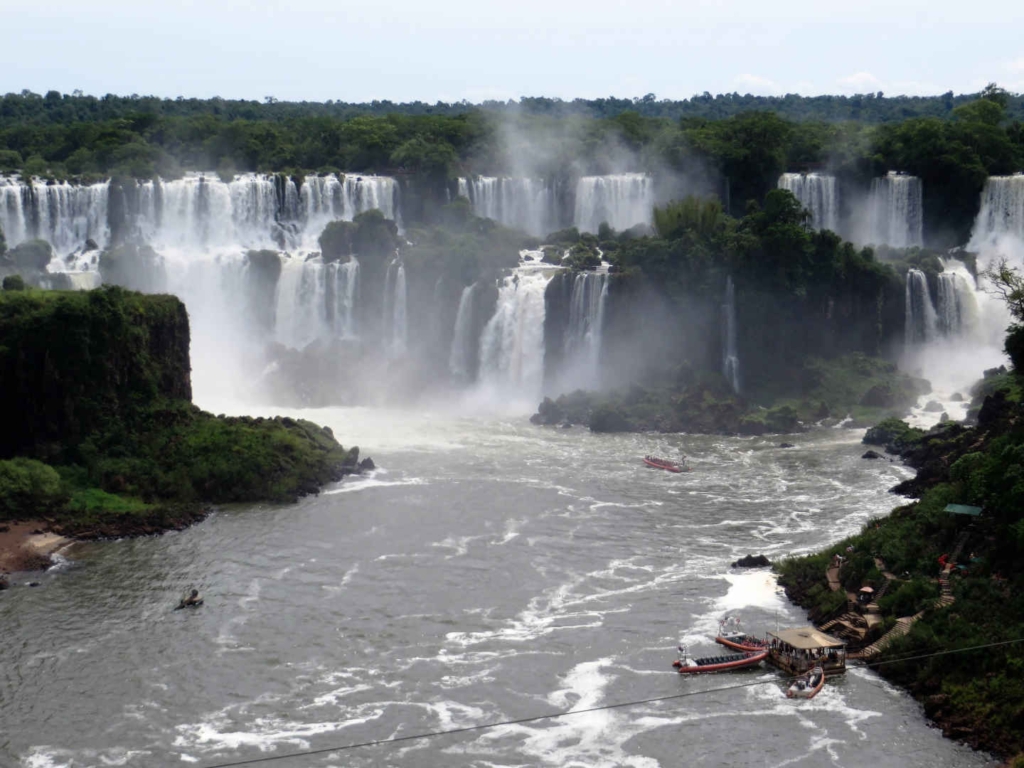
Day 20: Travel from Rio de Janeiro to Iguazu Falls
The best way to get to the Iguazu Falls is to get a cheap flight from Rio de Janeiro to Foz do Iguaçu, which takes 2 hours and 20 minutes.
The best hostel in Foz do Iguaçu is the fabulous Concept Design Hostel & Suites. This popular place is clean, modern and cool, with a swimming pool and a tasty breakfast. For a special stay, one of the best hotels in Foz do Iguaçu is the exceptional Belmond Hotel das Cataratas. Located right in front of the falls, it has exquisitely furnished rooms. Staff here can organise a tour of the falls outside of normal visitor hours.
Check out the best hotels for your dates in Foz do Iguaçu using the map below:
Day 21: Visit Iguazu Falls from the Brazil side
From the Iguazú National Park entrance on the Brazil side of the falls, follow pretty trails along the forest wall. From here, you can view the scale and panorama of these impressive waterfalls, as well as the local wildlife. At the end you come to what’s known as Devil’s Throat. This is a U-shaped chasm where you can truly appreciate the sheer power and volume of this natural wonder.
Easily reach the Iguazu Falls from Foz do Iguaçu via an organised transfer from your hotel.
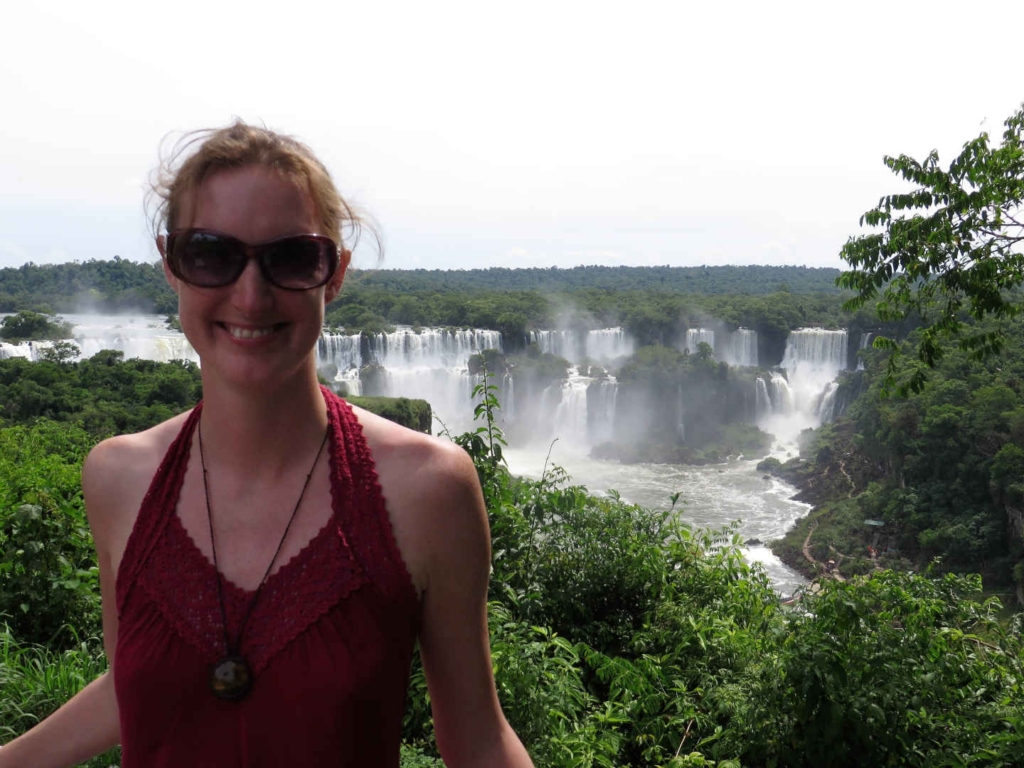
Day 22: Visit Iguazu Falls from the Argentina side
Go to the Terminal Transporte Urbano (TTU) in Foz do Iguacu and take the buses crossing the border to Puerto Iguazú.
The best hostel in Puerto Iguazú is the superb Hospedaje Jose Gorgues. Here, the hosts go above and beyond to make sure you enjoy your stay. For a brilliant budget hotel, head to the Posada del Jacarandá, which has a great outdoor pool. If you want special accommodation, with views of the falls from your room, check out the gorgeous Gran Melia Iguazu.
Find the best accommodation deals for your dates in Puerto Iguazú by exploring the map below:
From the Argentinian side, you can see the Iguazu Falls up close and personal, and even get inside them. Some of the views here are so beautiful, as the falls interweave with rocks, islands and greenery.
Check out my full guide to Iguazu Falls and the best time to visit here.
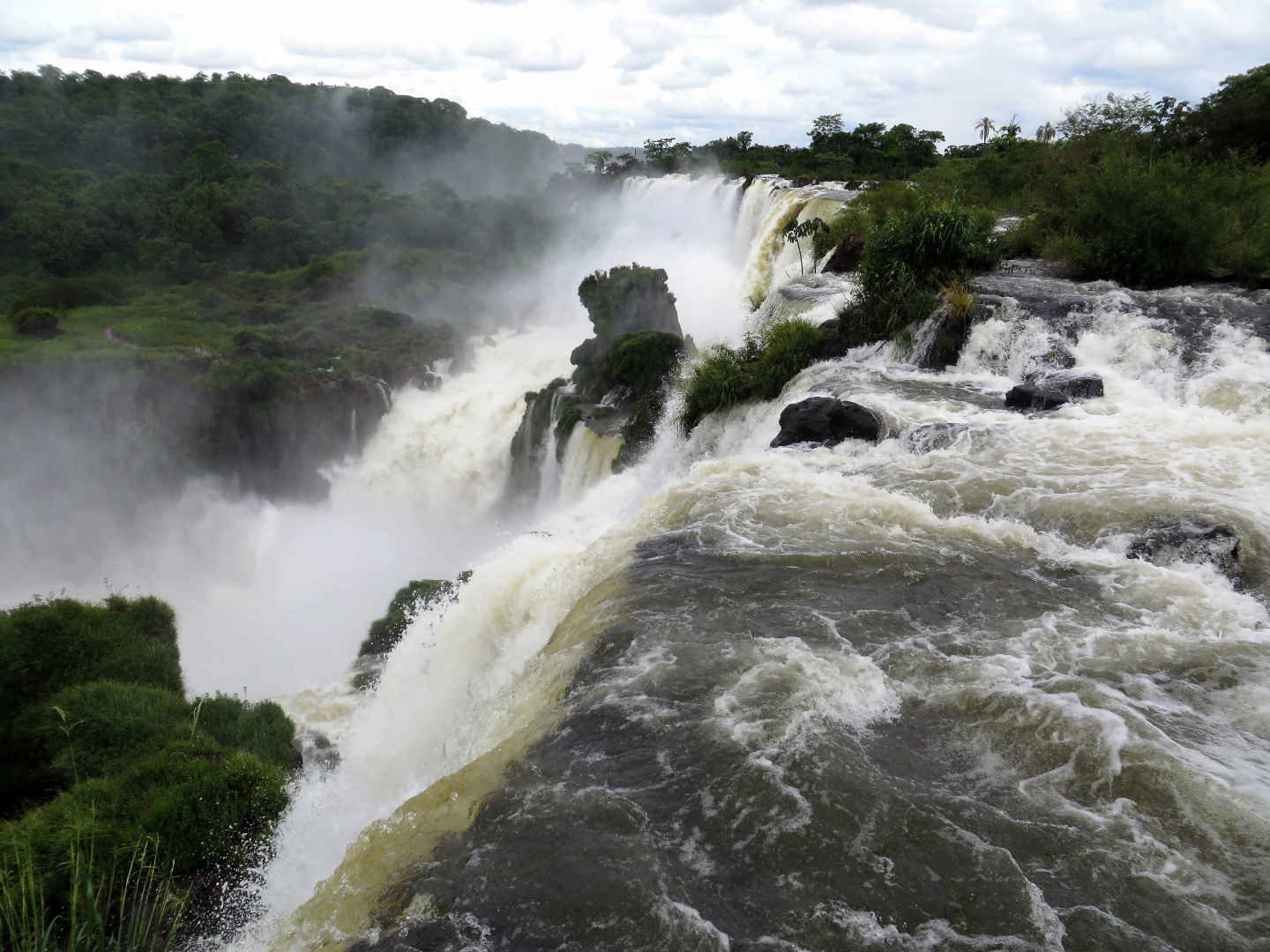
Day 23: Travel from Iguazu Falls to Buenos Aires
Getting from Iguazú Falls to Buenos Aires is easy. The quickest way is by plane, with cheap flights from Iguazu to Buenos Aires taking about 1.5 hours. They are often reasonably priced if booked in advance. For a budget-friendly option, overnight buses are a popular choice, offering comfortable seats and a scenic 18–20 hour journey – this is what I did.
Week 4: Buenos Aires, Argentina
If you’re on a 1 month South America itinerary, a visit to Argentina’s capital city of Buenos Aires is a must. With its stately architecture and jacaranda-lined boulevards, Buenos Aires is a joy. Reasons to visit include its legendary steaks, seductive tango and late-night parties.
Buenos Aires is the ideal city to fall in love in. I can imagine wandering the sun-drenched streets, arm in arm with your new beau. Sharing rich red wine, you gaze into each other’s eyes and dance the tango late into the night. But even if you are there alone like me, you will undoubtedly fall in love with the city.
Day 24: Check into your accommodation in Buenos Aires
I recommend you head straight for Palermo Soho. It’s a joy to walk around the streets of this charming neighbourhood, with its lively cafés and restaurants, with music and tables spilling outside.
If you are looking for a stylish hostel in Palermo Soho, check out the beautiful Meridiano Hostel Boutique has a cool bar and terrace, and its dorm beds come with useful personal fittings and curtains for privacy. The super clean and friendly Caravan BA boutique hostel is loved by guests for its seasonal outdoor swimming pool, sports facilities and activities that help you meet other travellers easily. Finally, the fabulous Malevo Murana Hostel is perfectly located in Palermo and offers a tasty breakfast and great outdoor areas.
Explore the interactive map below for the latest accommodation deals in Buenos Aires:
Day 25: Take a walking tour of the city
I recommend taking a walking tour in English on your first day to get your bearings and learn about this fascinating city.
Sights include the home of Argentina’s most prominent figure in the history of tango, Carlos Gardel. In the Balvanera neighbourhood, you’ll see his face painted in colourful murals.
You’ll also see Plaza de Mayo and the pink Presidential mansion, Casa Rosada. On this building’s balcony in October 1945, Juan Perón and his First Lady Eva famously made their impassioned speeches to tens of thousands of Argentines.
Book your place on a popular full-day walking tour of Buenos Aires in English.
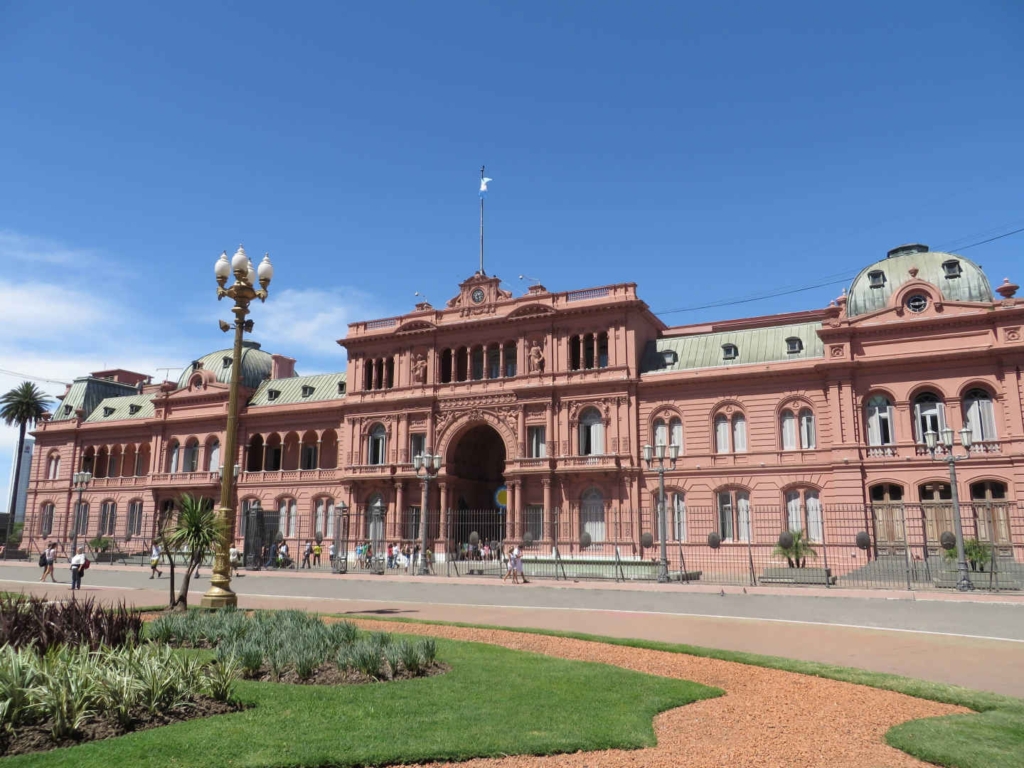
Day 26: Visit Museo Evita and Recoleta Cemetery
In Buenos Aires, you can visit Museo Evita to learn all about President Juan Perón’s wife Eva Perón, known as Evita. This museum tells her story through proud quotes from her autobiography, her stylish designer outfits and her work to improve the rights and lifestyles of women, children and the poorest communities in Argentina.
Eva Perón’s body is buried in the city’s Recoleta cemetery. Intricate, symbolic stone-masonry and wrought ironwork decorate these mausoleums, which belong to some of Buenos Aires’ most wealthy and accomplished families.In the afternoon, walk along its avenues of grand Gothic tombs or take an organised walking tour.
Don’t miss out – book your place on a guided walking tour of Recoleta cemetery in English.
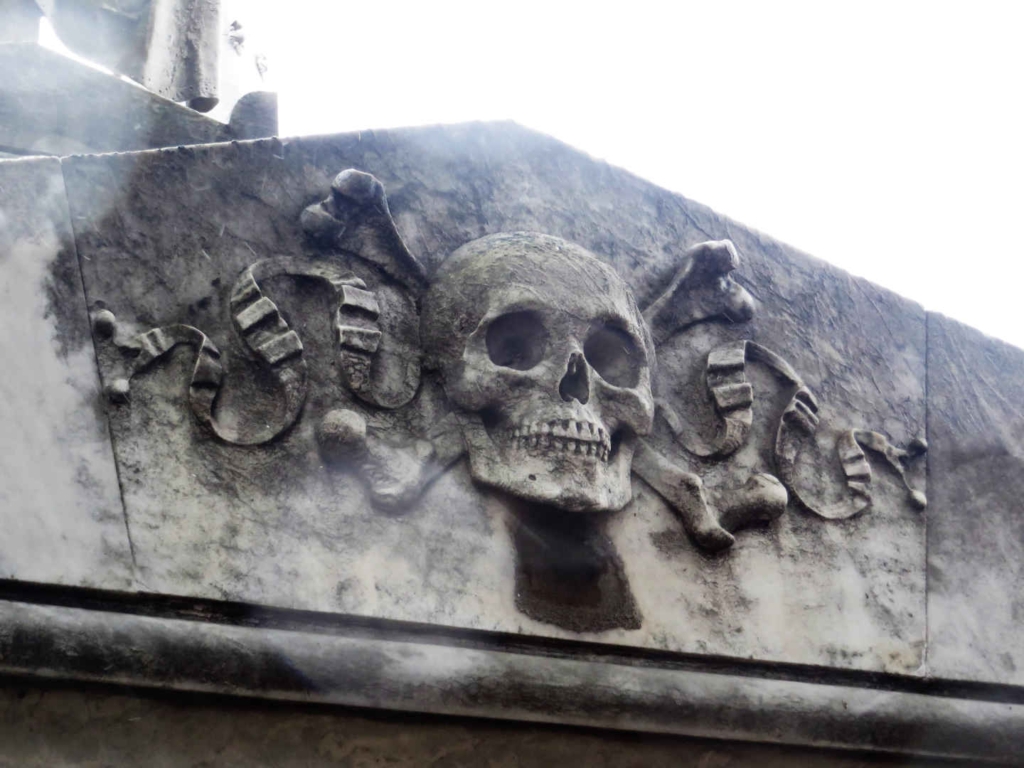
Day 27: Explore San Telmo and take an evening tango class
Spend the day exploring San Telmo. Pop-up art galleries, late-night bars and street murals give this historic neighbourhood a bohemian vibe. Explore its antiques shops, dine at its raucous steakhouses and see its Sunday flea market and street performers.
In the evening, either enjoy one of the area’s upscale tango dinner-shows. If, like me, you’re intending to try to learn tango while you’re in Buenos Aires, take the number 24 bus half an hour to visit La Catédral Club. Watching the people twirling with their partners, then taking to the floor myself, I was seduced by this place and had a blast trying to master the steps of this dance.
Enjoy an authentic tango experience with a fun tango lesson.
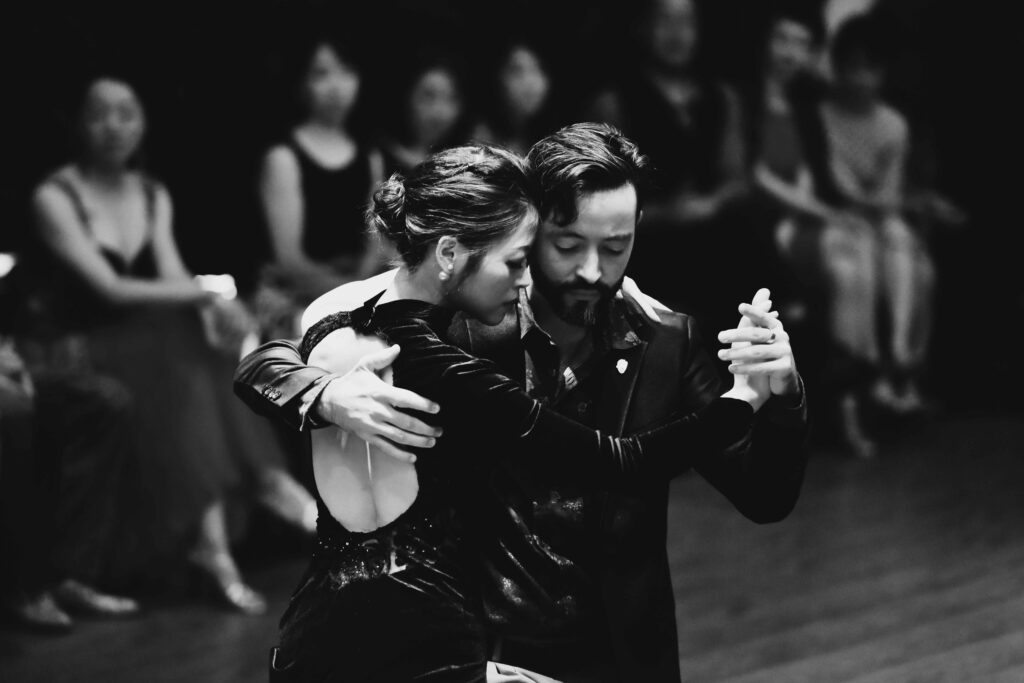
Day 28: Tigre Delta day trip
Today, take a day trip to the Tigre Delta, around an hour north of Buenos Aires by train. This unique area is named after the jaguars that once roamed the area. It consists of hundreds of small islands connected by waterways, giving you a peaceful escape from the city. You can take boat tours through the delta, visit the Victorian-era town of Tigre and enjoy lunch overlooking the rivers.
Learn about the history of the Tigre Delta on this popular day trip from Buenos Aires.
Day 29: Cooking class and steak dinner
Argentina is world-famous for its top quality beef steak and food in general is a passion in Buenos Aires.
Start your day with a morning cooking class in Palermo, where you’ll learn how to make empanadas and alfajores.
For dinner, if you’re on a budget, I recommend the steak ‘happy hour’ at a restaurant called La Cabrera. I love this concept: at this notable restaurant you get to sample the top notch steak, accompaniments and Malbec wine for around 40% less than patrons normally pay – as long as you arrive promptly and leave the restaurant by 8pm. Fantastic value. Alternatively, splurge on a traditional parrilla (steakhouse) experience at the popular Don Julio restaurant for the full Argentine asado experience.
Why not tuck into a special Buenos Aires gastronomical dinner experience – book it here.
Day 30: Departure from Buenos Aires
On your final morning, check out of your hotel and prepare for your departure. Take time to pack your belongings and perhaps grab a final coffee in one of Palermo Soho’s charming cafés as you reflect on your incredible month-long journey through South America. Why not book your airport transfer in advance for a smooth journey to catch your flight.
As you prepare to fly home, or to your next destination, take a moment to reflect on all the experiences you had in Buenos Aires and your travels around this fabulous continent.
Read my full guide to Buenos Aires here.
The essential packing list for your South America adventure
Packing smart for your 1 month South America itinerary means considering its diverse climates and your chosen activities.
Pack layers for varying temperatures, from desert nights to tropical heat. Include a waterproof jacket for Iguazu Falls, along with a fleece, thermals and comfortable hiking boots for Atacama Desert’s cold nights stargazing and exploring its rocky terrain. Don’t forget swimwear for Rio’s beaches and slightly dressier attire for Buenos Aires’ sophisticated restaurant scene.
Bring a universal adapter compatible with the type C, type I and type N plugs used across Chile, Brazil and Argentina. A portable power bank is essential for long travel days on the bus.
Pack sunscreen with high SPF for desert and beach activities, plus insect repellent for the evenings. I have fair skin and when I got sunburnt in Rio, I found aloe vera gel soothed my skin like nothing else – I swear by it.
Ensure your passport has at least six months validity and carry both physical and digital copies of this and any other important documents. Travel insurance is essential for this type of trip.
Frequently asked questions about South America
How much does a 1 month South America trip cost?
Backpackers can expect to spend approximately $1,200-1,800 USD for the entire month, including accommodation, food, transportation and activities. Mid-range travellers should budget $2,000-3,000 USD. Costs vary significantly between countries, with Chile being the most expensive and Argentina offering better value.
What’s the best time to visit South America for this itinerary?
The ideal time for this route is during South America’s shoulder seasons: March to May or September to November. During these periods, you’ll enjoy pleasant weather, fewer crowds and better accommodation rates. Avoid the peak summer season (December-February) when places like Rio can be crowded and expensive, and the winter months (June-August) which can get cold and rainy.
Do I need visas for Chile, Brazil and Argentina?
Most Western passport holders can enter these three countries visa-free for tourism purposes, typically for 90 days. However, visa requirements change frequently, so check current requirements with your government’s travel advisory website before departure.
Is it safe to travel solo in South America?
Solo travel in South America is generally safe when following common-sense precautions. Stay aware of your surroundings and don’t carry valuable items. Solo travellers should take extra precautions, especially at nighttime in more dangerous cities like Rio.
How much Spanish/Portuguese do I need to know?
It definitely helps if you know at least some basic Spanish or Portuguese. While most staff in tourist destinations and hotels speak English, many servers in shops don’t speak any at all. More than once, I found myself doing charades to act out what I needed!
Final thoughts on the best 1 month South America itinerary
A one-month itinerary through South America will leave you with memories to treasure forever.
From the otherworldly landscapes of Chile’s Atacama Desert to the energy of Rio de Janeiro, the thundering majesty of Iguazú Falls and the enchanting streets of Buenos Aires, each destination will inspire you.
South America’s rich diversity in culture, cuisine and natural beauty promises experiences ranging from peaceful moments of reflection to exhilarating activities.
If you have a month to spare, spend it exploring the wonders of South America — it’s a journey that truly is the adventure of a lifetime.
Ready to go? Start by reading more about how to spend an incredible two weeks in Chile.


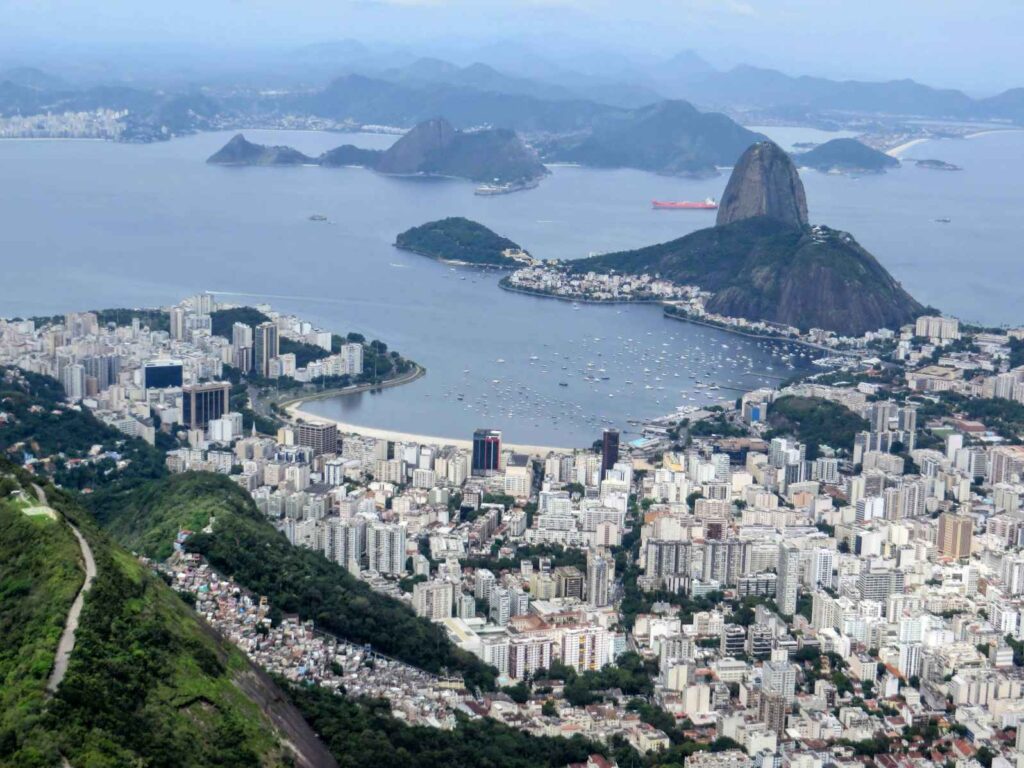
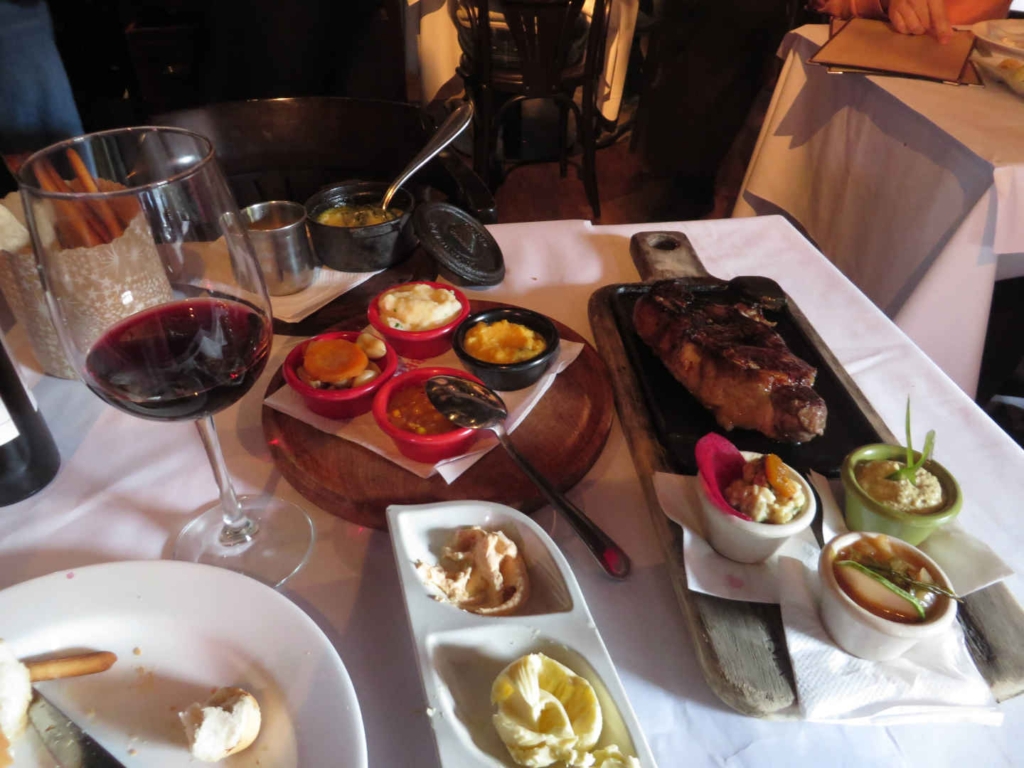
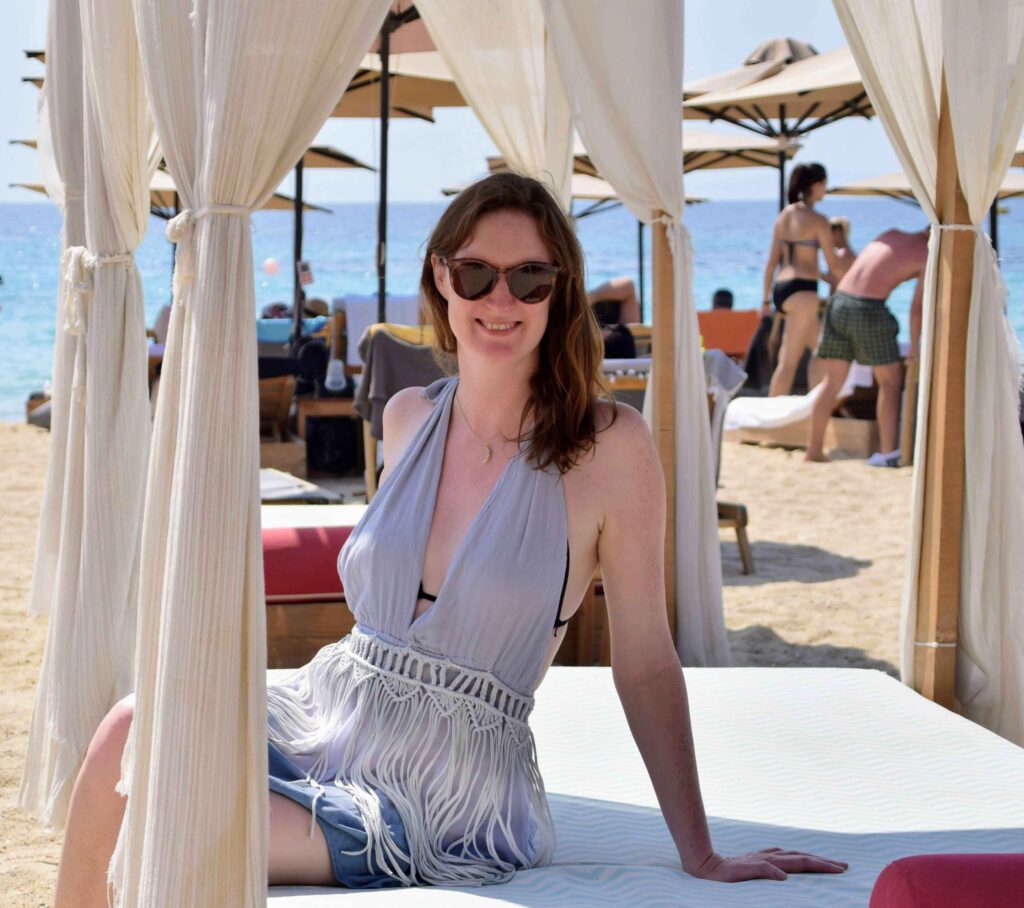
No Comments Yet